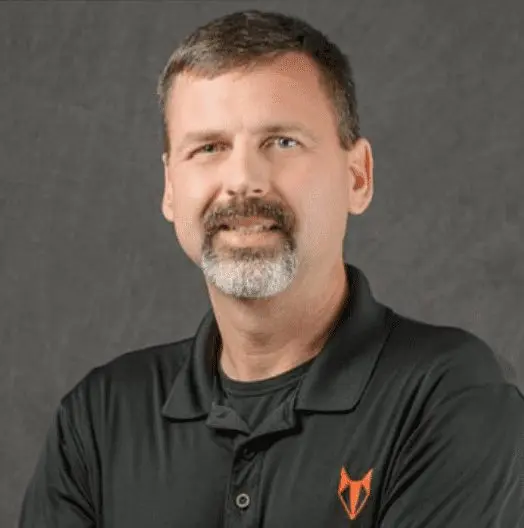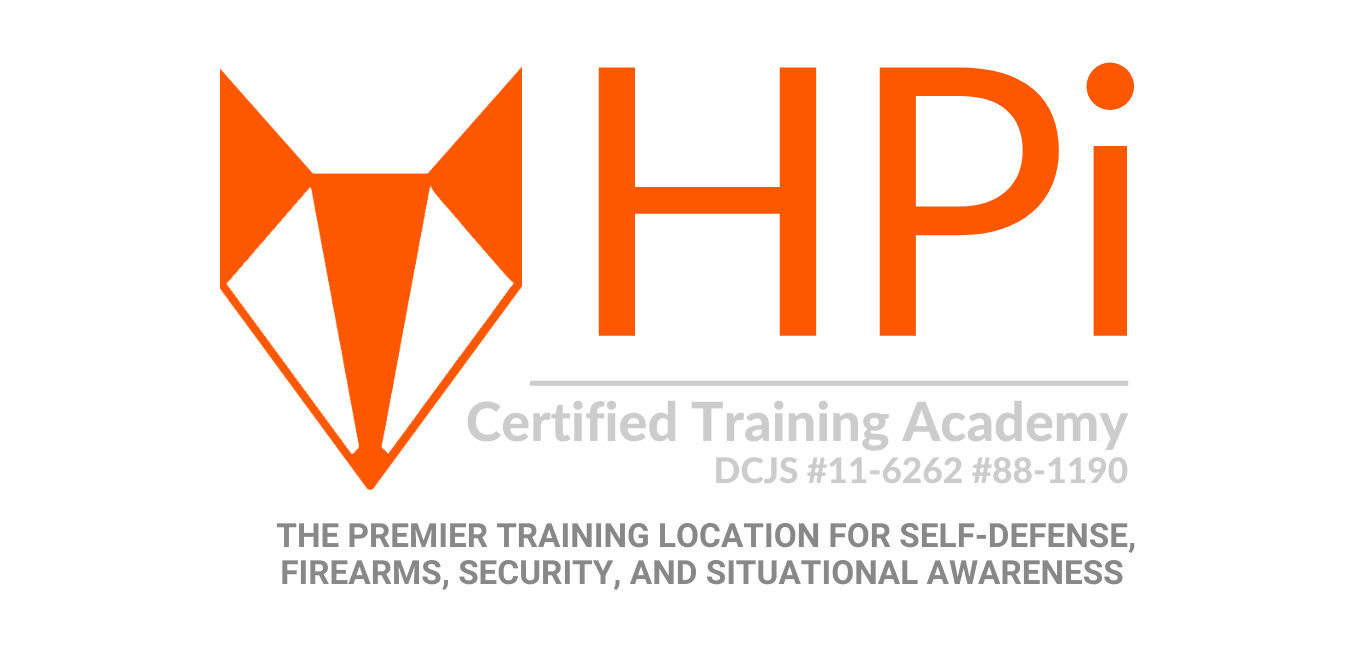Living in a State of De-Escalation
Part 2
Active Shooter
“Don’t be a statistic… Be a Survivor”
At any level, an active shooter is essentially individuals with a gun. Whether they are shooting at hundreds of people, or just at you, nobody has more control over your survival than you do. It can happen anywhere, at any time, so preparation and a De-escalation mindset are key to your survival! You must be vigilant and prepared!
#1 – Active Shooter
There is no exact profile of an active shooter, but they do share some common characteristics:
• Desire to end human life or inflict extreme harm on an individual or a group of people.
• Look for easy targets and opportunities.
• Most shooters have NO previous arrests for violent attacks.
• History of social isolation; and
• Interaction with mental health professionals.
No matter what laws or restrictions are in place, the shooter will always find access to weapons, magazines, and ammo to carry out their goal.
#2 – Average Police Response Time to an active Shooter (Approximately 14 minutes)
That’s the average time it takes a police officer to show up at the scene after a high-priority 911 call is received. In many larger cities, including Los Angeles and New York, there are full-time officers assigned to SWAT operations. Yet statistically, their response time is approximately 20–30 minutes before they can get to the scene. Smaller municipalities often have officers who are regularly assigned to other departments, although they are trained for “active shooter” incidents. It can take up to 45 minutes or longer for these units to respond. Nearly 99% of the time, these critical situations are handled by regular patrol officers before SWAT ever gets there. Therefore, it is your response time and what you do that really count.
#3 – Head up, Eyes Open
In this scenario, situational awareness means paying attention to exits, cover and people. When going to a mall or market, or even during your first days of class at a new school, pay attention to the exits. Make a mental note of at least three options — preferably in three different directions. They could be as obvious as a set of double doors or as desperate as a second-floor window with a 10-foot drop onto pavement. Second, observe the whereabouts of any large items or objects that seem sturdy enough to provide cover if needed and file this information. In some malls, for example, there may be a lounge area with furniture, sculptures or columns placed at regular intervals. If you are in a school, are the desks bolted to the floor? Do the windows open? Filled bookshelves in a library or the cooking and dishwashing equipment in a cafeteria will provide very good cover. Third, look around at the people you pass while in public places or when you are among crowds. For instance, in a mall, pay special attention to individuals who don’t seem to have the demeanor of the average shopper, so to say. Many times, these shooters imagine themselves as some type of militia or military imitators and could be wearing army boots or fatigues, while clearly identifiable as someone not in active duty.
Here is this same information condensed into a simple, easy-to-remember checklist:
• Know your exits.
• Locate places or objects that could serve as your nearest cover.
• Observe isolated individuals carrying large bags, such as duffel bags, or who are wearing unseasonably heavy clothing. Keep an eye on people who seem particularly nervous or are sweating. Watch individuals wearing military-style boots or clothes that are “out of place.” Most importantly, trust your gut and be alert to someone or a situation that just doesn’t seem right so you can notify the proper authorities.
#4 – Shots Fired
People who have never heard gunfire often compare it to the sound of a car backfiring or a loud firecracker. But the discharge of a firearm in a closed environment, such as a mall or a classroom, is distinct and will leave no question that an assault of a deadly nature has begun. As your ears begin to ring, you must understand that what you do in the first few seconds of this event will determine if you live or die. Some people think that gunfire produces the smell of burning sulfur or gunpowder like at a fireworks display. However, modern ammo uses smokeless powder and is virtually odorless. Of all your senses, initially trust your ears in this scenario — the sound of gunfire is unmistakably distinct…if you know what to listen for.
As soon as you hear shots, the FIRST THING you must do is remove yourself from the immediate vicinity of the source of the gunfire, which is referred to as the “kill zone” or the “X,” and do so without hesitation. Simply put, you must do whatever it takes to get clear of the “kill zone” if you expect to have any chance of survival or retaliation. If you survive the first 10 seconds of this type of ambush, you have a much better chance of making it out alive.
#5 - Fight, Flight or Freeze
When a shooting occurs in a public place, the natural and initial response is to flee, but you need to do it with forethought. There is little time to think, but you must make your flight a calculated one. You don’t turn yourself into a more visible and attractive running target. By scrambling in panic, you could end up going nowhere worthwhile or even moving closer to the line of fire. Your flight must be for the purpose of getting clear of danger (off the “X”) and not broadcasting your position. In many shootings, it’s bystanders who freeze who are added to the casualty toll. Do not freeze or burrow in — react and move immediately. Hitting the floor and lying flat is usually the first thing people do instinctively, but don’t just cover your head and hope for the best.
#6 – Cover
You must begin moving immediately while staying low. If you can dive for one of the objects you previously identified as cover, make that move while the shooter is aiming somewhere else. Get to your cover while staying as low as possible and do it with maximum purpose. Continue to move away from the shooter, going from cover to cover. Visualize the path you will take — this will help you set your mind to achieving small goals or little victories, as each move takes you farther from the “X.” For example, you see a potted plant 15 feet away. Your goal is to make it to that point, and thus you gain one more little victory in your overall escape plan. Once you make it to that secure cover, follow your path to get to the next one. At first, get to cover by making small bounds. As you gain distance from the shooter, you can increase the distance you travel between covers. Start by low crawling but note that the farther you are away from the shooter, the faster you can move, until even sprinting if the situation warrants it. But remember, assault rifles have a maximum effective range of 600 meters (or six football fields), and sniper rifles can hit targets even further, so if you can hear gunfire, you can be shot. You must continue to move with maximum purpose and calculated caution.
#7 – Danger Crossings
Even when places have numerous objects that afford cover or concealment, your escape route will often have open spaces, like hallways, sidewalks or roads that must be crossed. These junctions, while you are still in the line of fire, are called “danger crossings.” If you come upon a dangerous crossing, take a moment to discern a pattern in the shooting and try to move when there is a pause in the gunfire. This will generally happen when the shooter is reloading. Even after you have cleared the kill zone, there is still a good chance of being shot. Maintain a lower profile (slightly hunched over, with your weight over the balls of your feet). Continue to move from cover to cover. Utilize shadows or “dead space” areas that are obstructed from view. Be sure to stay at least a foot off walls. When a bullet ricochets off a wall, it tends to travel down the wall approximately 6 inches. If your body is against the wall, you will get hit.
#8 – Exiting the Area
Once you have successfully cleared the kill zone, you need to quickly decide the best way to gain even greater distance from the shooter or ultimately exit the building. Remember where you saw the main exits. Fire exit doors in malls and many other public buildings are required by law to be at the rear of the building or at the back of each store. Continue to move, but take no chances, because the shooter could be following you. Put as many obstacles as you can between you and danger, by closing doors as you go or tumbling merchandise to the ground, making it harder for the shooter to trail you if that is his or her intention. If, and only if, you feel you are at a location of relative, short-term safety, gather yourself. When you are in a defensive position that is well hidden and away from the site of the shooting, take a moment to calm yourself, but keep your mind alert.
#9 – Stop and Assess
You’ll naturally think, “What the hell just happened”!? Don’t sit there and ponder this. Visualize your trigger and focus. The calmer you are, the better equipped you’ll be to outthink your assailant. To devise a trigger, you must dig deep, identify the single-most-important thing in the world to you and make a mental portrait of this image. Whatever it is, your trigger is how you ignite the will to survive. Use this memory file as the ultimate motivation to get you through life-and-death situations.
If able, call 911. Give police as much HUMINT (human intelligence) as possible, including:
• Who you are, what’s happening and where
• How many shooters there are and their physical description
• What types of weapons are being used, and what special gear, such as body armor, you observed
• The shooter’s skill level, ethnicity, language, accent, and anything else that may be helpful to first responders.
Next, check yourself for wounds. If you have made it this far, you are probably not critically injured. Present breathing and a heartbeat rule out serious injuries, but many times, in great stress, people will be injured and not know it. Do a quick head-to-toe self-assessment, paying particular attention to bleeding and potential fractures. If you are with others and someone is injured, you may need to figure out a way to transport that person. Also, take a moment to remove excess or brightly colored clothing and any accessories you don’t need (coat, purse, or shiny jewelry). Another part of this assessment step is to take an inventory of the resources at hand that could help you further. Is there anything that can break a window, for example, or something to act as a transportable shield? Look for a vending machine or a water cooler nearby to get some nourishment? You have just been through strenuous physical activity and significantly more effort may be required until you are safe.
#10 – Develop a Plan
Success often comes down to who knows the environment better. If a mall or school turns into a battlefield, knowledge of the environment will be a great advantage. If you are in a familiar environment, such as an office building where you work, where your previous situational awareness provides knowledge of the exits, this is the time to figure out where you are. If you are in an unfamiliar place, like a mall, and your smartphone still works, get a map from the website, or use evacuation placards or signs posted on walls to get your bearings. Decide as to the next course of action. There isn’t time to second-guess yourself or for debate. Pick the best plan for evacuation and then follow it.
In an active shooter scenario, here are your three options:
1. Head to the nearest exit.
2. Run to the highest level and attempt rescue from the roof.
3. Set an ambush, recover a weapon, and shoot your way out. Even if the police are on their way, don’t wait for help. You might be dead before the cavalry gets there.
In making your decision to evacuate, choose the most discreet way out and the one most likely to limit your chances of meeting the shooter again. Your goal now is evacuation. However, remember that the safest evacuation route may not be the most direct. The best exit may not be the closest one.
#11 – Fight for your Life
Sometimes, the only way out is to fight. There will be times when your only course of action might be limited to taking on the shooter. If that’s the case, it’s best to try to capitalize on the shooter’s lack of discipline or training and attempt to set an ambush. The best ambush is one in which your target ends up in the exact location you want them in. Essentially, walking right into your trap. Put yourself in a hidden position that the shooter must pass by. This is known as the “strike zone.” Obviously, surprise is the key to a successful ambush. Additionally, you will increase the odds of your success with a weapon. An ambush with using multiple people is the ideal form of ambush because you can strike from multiple positions simultaneously. Just remember that with multiple people, the odds of hurting one of your own increases. Make sure that you direct those in your party to remain at pre-established set points in the ambush to avoid causalities from “friendly fire.” If the ambush is successful and the shooter is dead — good, the mad dog is done. If the shooter is alive, make sure to bind and gag them.
Never assume this is the only shooter or that the incident is now over. Instead, be sure to:
• Stop and listen: Do you hear any more gunfire?
• Does the shooter you took down have a radio? If they do, they must have accomplices.
• Attempt to get information on the number and their location from the assailant using any effective form of coercion. Yes, I mean torture. This person was trying to kill you and other innocent people
• Immediately inform the police of your status and pass on any useful information. Again, never assume an active shooter situation is over until law enforcement declares it.
#12 – Hands in the Air
If your efforts are successful and you’ve made it out alive, you surely don’t want police to think you are one of the assailants. As in the military, law enforcement officers are taught to look at the hands of anyone first. When your hands are free of weapons you aren’t considered a shooting threat. As you are about to exit, if you think there is a high probability of encountering law enforcement, you must empty your hands. Put all weapons on the ground and away from you. Place hands high in the air and yell out, “Friendlies: WE ARE UNARMED!” Keep repeating this and do so loudly. At this point, do exactly as you are instructed. There will be time for police to realize you are a survivor once they have you in a nonthreatening position.







